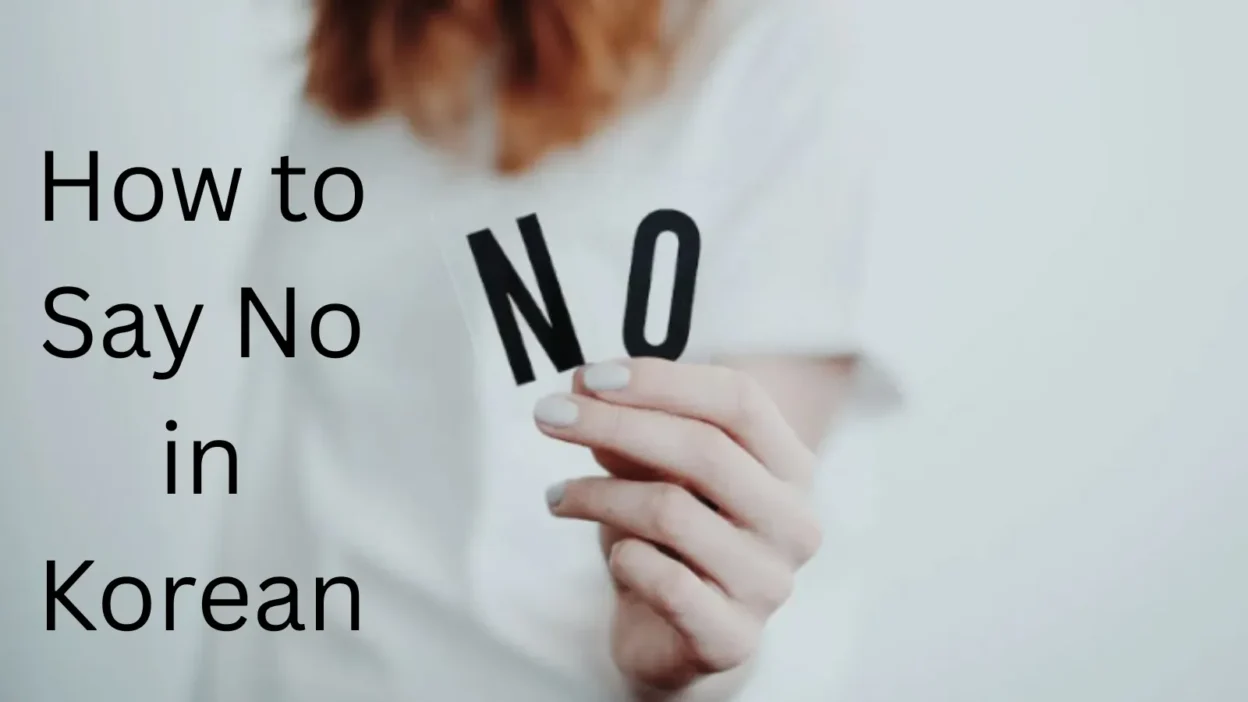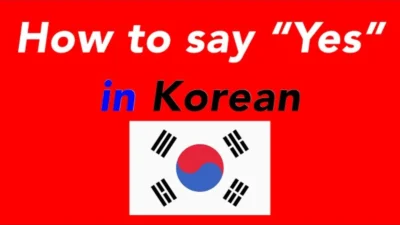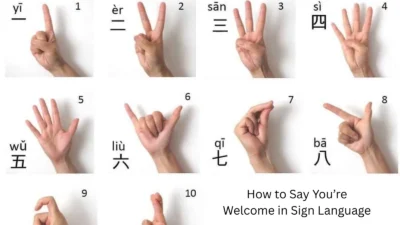If you’re learning Korean, knowing how to say No in Korean is super helpful for everyday conversations. Whether you want to refuse something politely, disagree softly, or simply say no in a clear way, Korean has a few simple phrases you can use. In this guide, I’ll show you the most common expressions, how to pronounce them, and when to use each one naturally.
In this guide, you’ll discover how to say no in Korean using both formal and informal expressions, along with pronunciation tips and real-life examples.
Learning how to say no in Korean helps you respond confidently in social and professional settings.
Understanding how to say no in Korean also shows cultural awareness and builds respectful communication.
Say no in Korean Examples
Let’s explore 15 different ways to say no in Korean, each with an example conversation and context about where and how it’s typically used.
1. 아니요 (aniyo) – No
Origin:
This is the standard, polite way to say “no” in Korean. It comes from the root verb 아니다 (to not be).
Example:
👤 User A: 이거 네 거야? (Is this yours?)
👤 User B: 아니요, 제 거 아니에요. (No, it’s not mine.)
Use: Polite and respectful; suitable in most situations.
2. 아니 (ani) – No (casual)
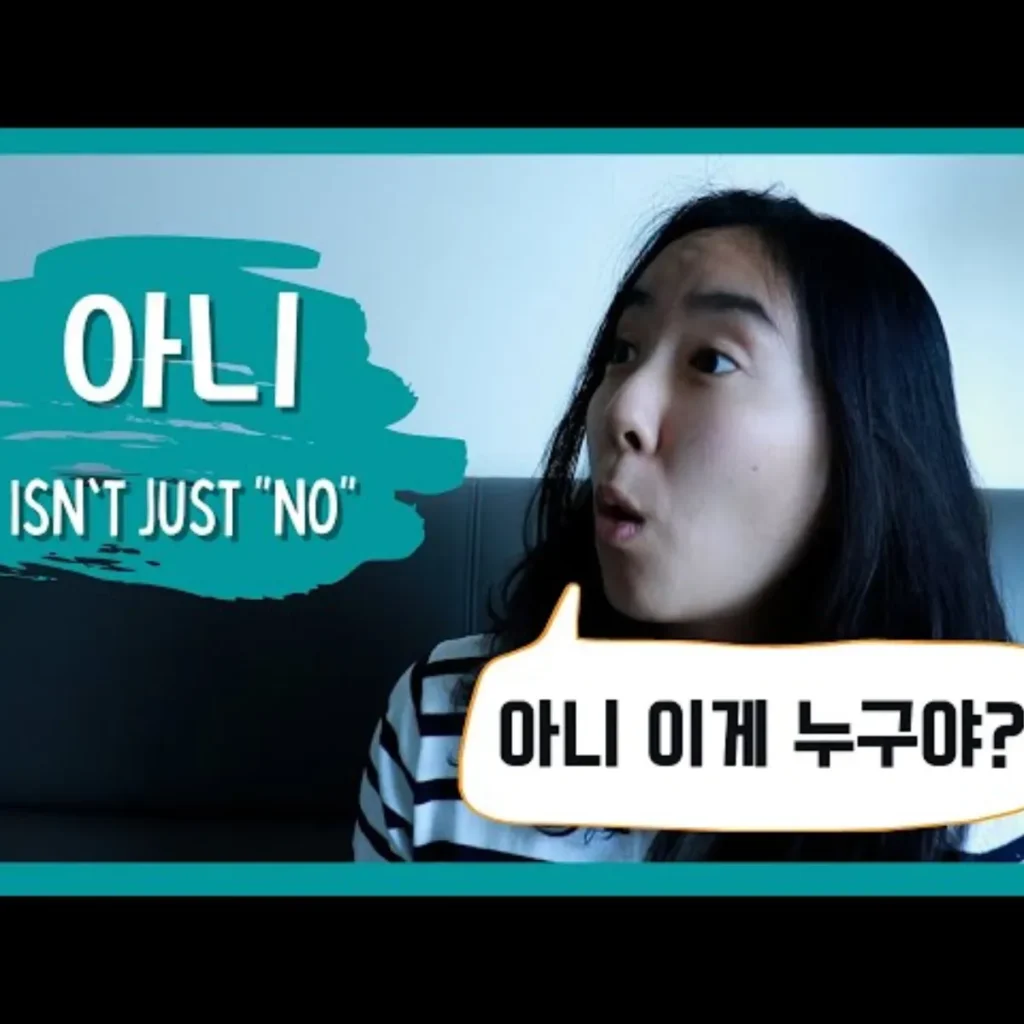
Origin:
A casual version of “아니요,” used with friends, siblings, or people of equal or lower status.
Example:
👤 User A: 오늘 영화 볼래? (Want to watch a movie today?)
👤 User B: 아니, 피곤해. (Nah, I’m tired.)
Use: Informal, used with close friends or younger people.
3. 안 돼요 (an dwaeyo) – You can’t / It’s not allowed
Origin:
Literally means “it won’t do.” Often used to refuse permission or when something is not possible.
Example:
👤 User A: 여기서 사진 찍어도 돼요? (Can I take pictures here?)
👤 User B: 안 돼요. 촬영 금지예요. (No, filming is prohibited.)
Use: Polite refusal for rules or permissions.
4. 싫어요 (silh-eoyo) – I don’t like it / I refuse
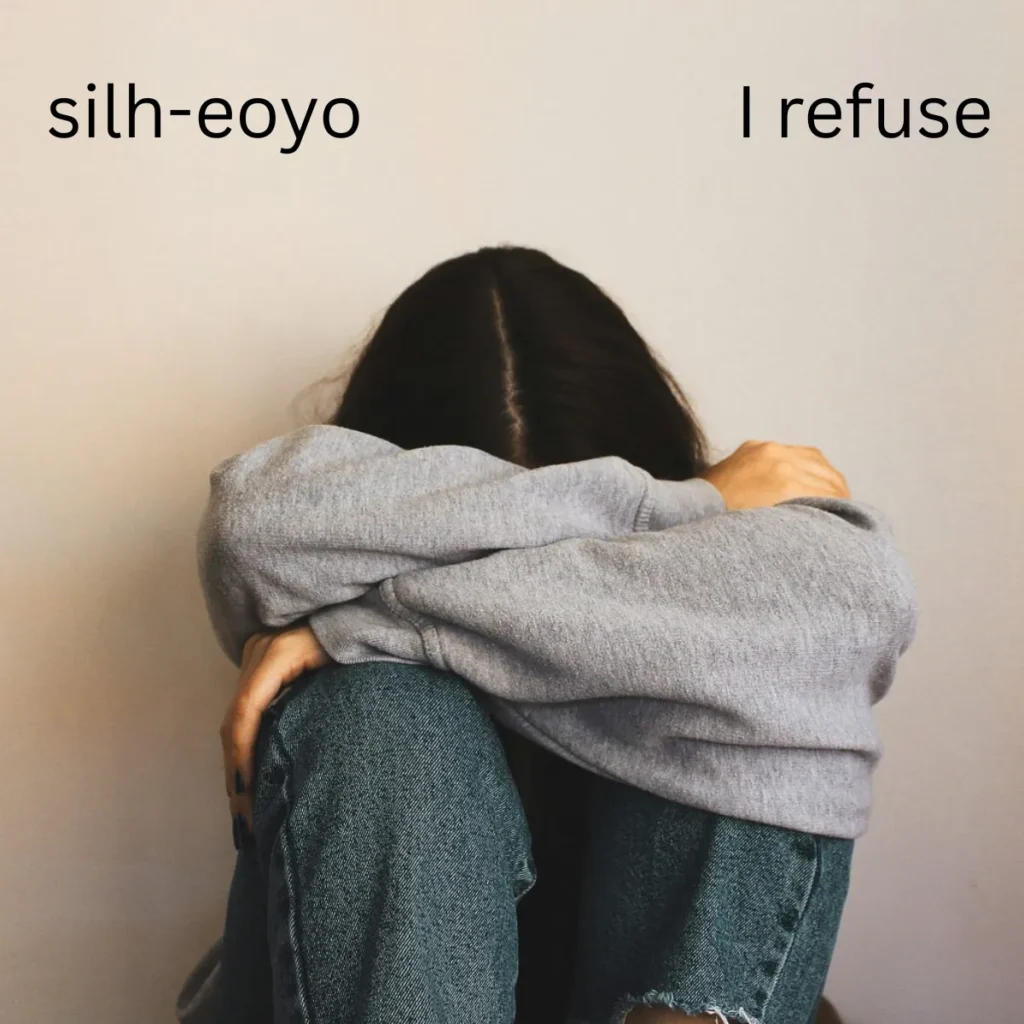
Origin:
Derived from the verb 싫다 (to dislike). This is emotionally loaded and often used to show strong rejection.
Example:
👤 User A: 이거 먹어봐. (Try this.)
👤 User B: 싫어요. 저 이거 못 먹어요. (No thanks. I can’t eat this.)
Use: Polite but firm rejection; more personal.
5. 글쎄요 (geulsseyo) – Well… / I’m not sure
Origin:
Softens a refusal. Often used when hesitating or avoiding a direct “no.”
Example:
👤 User A: 같이 가실래요? (Would you like to come along?)
👤 User B: 글쎄요… 생각해 볼게요. (Well… I’ll think about it.)
Use: Indirect or hesitant refusal; polite in uncertain situations.
6. 좀 힘들 것 같아요 (jom himdeul geot gatayo) – I think it’ll be hard
Origin:
A culturally sensitive way to decline without saying “no” directly. Emphasizes difficulty.
Example:
👤 User A: 주말에 도와줄 수 있어요? (Can you help me this weekend?)
👤 User B: 음… 좀 힘들 것 같아요. (Umm… I think it’ll be hard.)
Use: Very polite and soft refusal; common in Korean work culture.
7. 안 할래요 (an hallaeyo) – I don’t want to do it
Origin:
From 하다 (to do) + 안 (not) + -ㄹ래요 (intentional ending). This form is polite but expresses personal choice.
Example:
👤 User A: 같이 춤출래요? (Want to dance with me?)
👤 User B: 안 할래요. (I don’t want to.)
Use: Casual but polite choice of refusal.
8. 그건 좀… (geugeon jom…) – That’s a bit…
Origin:
An incomplete sentence used to subtly reject or show discomfort without saying “no.”
Example:
👤 User A: 우리 내일 새벽 5시에 출발하자. (Let’s leave at 5 AM tomorrow.)
👤 User B: 그건 좀… (That’s a bit…)
Use: Indirect and vague; saves face.
9. 안 됩니다 (an doemnida) – Absolutely not / Not allowed (formal)
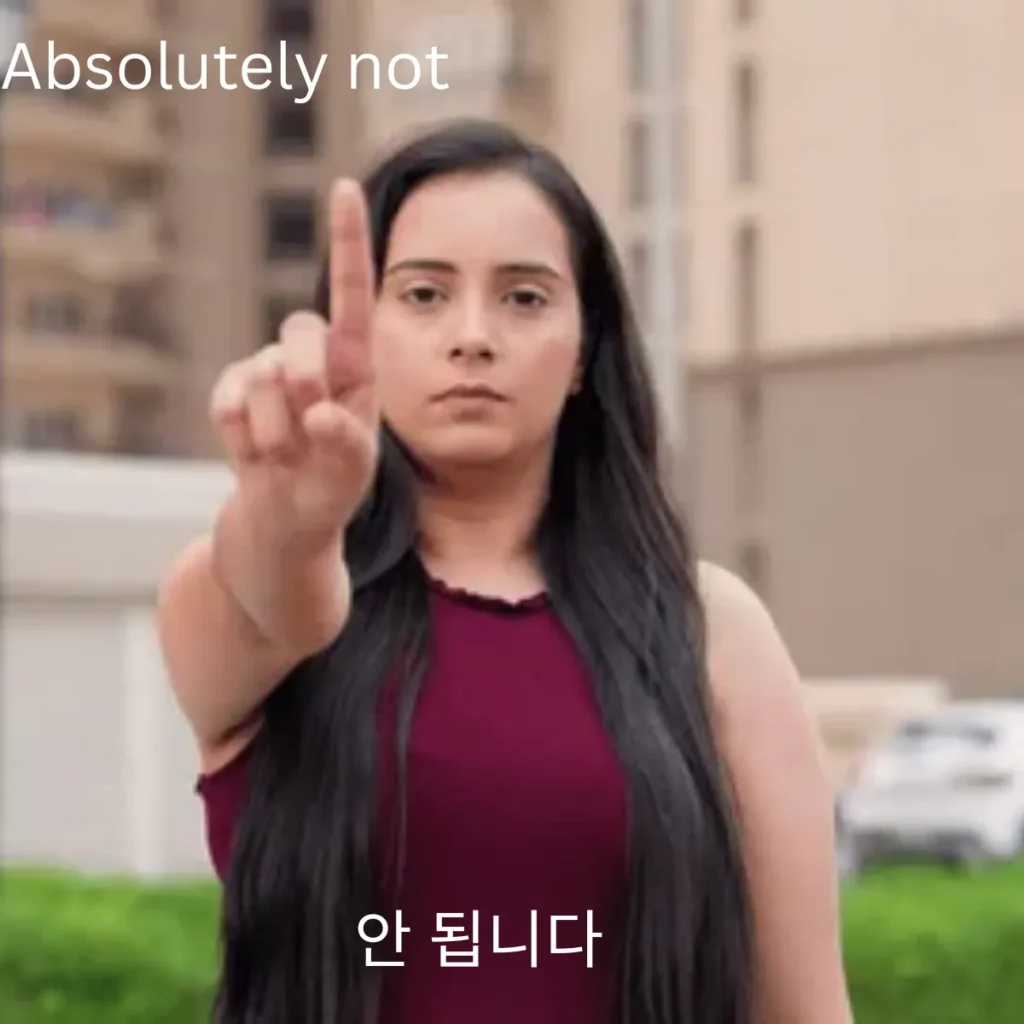
Origin:
Very formal form of refusal. Used in announcements, military, or business.
Example:
👤 User A: 여기에 들어가도 될까요? (Can I enter here?)
👤 User B: 안 됩니다. 출입 금지 구역입니다. (No. This is a restricted area.)
Use: Highly formal or institutional situations.
10. 죄송하지만 안 돼요 (joesonghajiman an dwaeyo) – I’m sorry, but no
Origin:
Combines apology with polite refusal — shows humility and empathy.
Example:
👤 User A: 잠깐 시간 좀 낼 수 있어요? (Can you spare a moment?)
👤 User B: 죄송하지만 안 돼요. (I’m sorry, but I can’t.)
Use: Respectful, gentle decline; great for customer service.
11. 못 해요 (mot haeyo) – I can’t do it
Origin:
From 못 (cannot) + 하다 (to do). Clearly expresses inability.
Example:
👤 User A: 발표 좀 대신해 줄래요? (Can you present for me?)
👤 User B: 못 해요. 준비가 안 됐어요. (I can’t. I’m not ready.)
Use: Honest, polite rejection.
12. 마음만 받을게요 (maeumman bad-eulgeyo) – I’ll just accept the thought
Origin:
Poetic Korean way of saying “Thank you, but no” — accepting the gesture, not the offer.
Example:
👤 User A: 이 선물 받아요. (Please take this gift.)
👤 User B: 아니에요, 마음만 받을게요. (No, your thought is enough.)
Use: Humble and thankful refusal.
13. 그럴 수 없어요 (geureol su eopseoyo) – I can’t do that
Origin:
Used when something goes against personal values or rules.
Example:
👤 User A: 그 얘기 비밀로 해줘. (Please keep this a secret.)
👤 User B: 미안해. 그럴 수 없어요. (Sorry, I can’t do that.)
Use: Moral or professional boundaries.
14. 별로예요 (byeolloyeyo) – I don’t really like it
Origin:
A soft, personal opinion that can be used to reject ideas, food, or suggestions.
Example:
👤 User A: 이 노래 어때요? (What do you think of this song?)
👤 User B: 음… 별로예요. (Hmm… Not really my style.)
Use: Casual, honest but not harsh.
15. 생각 좀 해볼게요 (saenggak jom haebolgeyo) – I’ll think about it
Origin:
This is a polite way to avoid answering right away. Often means “no,” but leaves the door open.
Example:
👤 User A: 내일 같이 여행 갈래요? (Want to travel tomorrow?)
👤 User B: 생각 좀 해볼게요. (Let me think about it.)
Use: Indirect refusal; very common in Korean.
FAQs
- What is the most common way to say no in Korean?
The most common word is 아니요 (aniyo), which is polite and safe to use anywhere. - How do you say no casually in Korean?
You can say 아니 (ani) when talking to friends or younger people. - Is there a very polite way to say no?
Yes, you can say 아닙니다 (anibnida) in very formal situations. - How do you politely refuse something in Korean?
You can say 괜찮아요 (gwaenchanayo) meaning “I’m okay” or “No, thank you.” - How do you say no in a strong or firm way?
You can say 안 돼요 (an dwaeyo) meaning “No, you can’t” or “It’s not allowed.” - How do you say no to an offer in Korean?
You can use 괜찮아요 (gwaenchanayo) or 아니요, 괜찮아요 meaning “No, I’m fine.” - How do you say no in texting (Korean casual chats)?
People often write ㄴㄴ (nn) which means “no no.” - What is a polite phrase for declining an invitation?
You can say 죄송하지만 어렵겠어요 (joesonghajiman eoryeopgesseoyo) meaning “Sorry, but it will be difficult.” - How do you say absolutely not in Korean?
You can say 절대 안 돼요 (jeoldae an dwaeyo) meaning “Absolutely not.” - Is body language important when saying no in Korean?
Yes, Koreans often shake their hand or wave it side to side while saying no politely.
Conclusion:
Now that you know how to say no in Korean, you’re better prepared to handle everyday situations with confidence and respect. If you’re speaking with friends, coworkers, or strangers, choosing the right level of formality is key.
Keep practicing how to say no in Korean to sound more natural, polite, and culturally aware in all your conversations.
